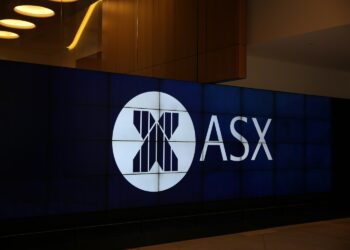The aftermath of the global credit crunch has resulted in a cyclical bear market for financial and property stocks and Australian share prices in these sectors have taken a battering. Some companies weathered the volatile conditions with earnings’ downgrades, while others have virtually imploded.
Australian companies that relied on access to large amounts of cheap debt, such as RAMS Home Loans, Allco Financial Group, Centro Properties and MFS, were all hit hard during this period of market volatility.
While the ongoing credit crisis has created enormous problems for leveraged players, this has also spilled over into the Australian banking sector.
“Who would have imagined a few years ago that Australian banks that have done so well would have been down 30 per cent for the first seven months of 2008? Now that’s pretty dramatic,” Perennial Investment Partners head of retail funds management Brian Thomas says.
Markets are driven by fear and greed and the former is rife in the current market cycle, he says. “It’s now a market that’s climbing a wall of worry as any negative news can lead to large sell-offs,” Thomas says.
Lack of trust from investors
However, alongside fear and greed, investors’ lack of trust is a new emotion that has emerged in the wake of the United States sub-prime crisis, according to Thomas.
“The banks and the whole financial system almost stopped operating and it’s still difficult now because people won’t trust to lend to each other, so I think that’s a really interesting emotion that’s driving the market,” he says.
“You need trust between counterparties and banks for the credit and financial system to work and, in a way, it’s not so much fear and greed, it is trust that has also broken down.”
National Australia Bank’s (NAB) recent write-down of more than $800 million to its collateralised debt obligation (CDO) portfolio is an example of how this type of market uncertainty adds to investors’ lack of trust, according to Colonial First State Australian Equities Core Fund manager Martin Littler.
“NAB recently came out and gave the market a view on their CDO portfolio and a write-down in it and a number of days later they corrected it with a further write-down,” Littler says.
“Now that sort of volatility happening so quickly either tells you that their pricing of those securities has changed very dramatically or their ability to know exactly what is going on, on a day-to-day basis, is quite opaque.”
This then leads investors to lack a sense of trust that the information is as current as it should be, Thomas says.
“It’s more difficult in these credit issues to get on top of where the problems are, how big they are and how quickly they come to market and so that leads people to have a fear,” he adds.
The property sector and particularly the opaque nature of some unlisted property trusts is also fuelling investors’ inability to trust, Platypus Asset Management portfolio manager Simon Bonouvrie says.
“There is still a lot of scepticism around the unlisted property sector and we’re also reluctant to invest in the listed property space because we can’t get a strong understanding of what the true value of the assets are on the balance sheets of a lot of these companies,” Bonouvrie says.
“So because we don’t have a confident understanding of the asset positions of these companies we’ve avoided them.”
The fact property and infrastructure stocks are paying dividends out of capital is another reason why Australian investors are staying away from these sectors, he adds.
“We think that the initiative of Mirvac and Transurban whereby they’ve cut their dividend back to operational cash flow is very good. For example, since Transurban has done that its share price has gone up,” he says.
“So the most prudent thing for other companies to do is follow suit and it will bring back confidence in the sector and investors will start treating them as growth stocks and their share price decline should stabilise.”
Reporting season keenly anticipated
As the volatile market conditions are set to continue, investors are keenly awaiting this month’s annual reporting season for companies listed on the Australian Stock Exchange (ASX).
BT Investment Management portfolio manager Jim Taylor says the reporting season will be very important for investors to gauge the degree to which the economy has slowed and the extent to which it is impacting on company profits.
“More importantly, investors will be looking very closely at companies’ outlook commentary and where the companies think that their earnings are heading,” Taylor says.
“So it will be an extent to which the companies are actually prepared to make comments about the outlook because I’m sure themselves they will be very unsure about where it’s all heading.”
Littler agrees. “The reporting season is not only going to be how companies have done for the last 12 months, it’s going to be more so about the views of the companies over the next six to 12 months,” he says.
“What I think we’ll find is a company may come out with a result that’s in line or slightly above where the market expected but if they start saying, ‘oh, the headwinds are really strong, our costs are going up and we’re finding it really difficult to pass those things on’, the market won’t like that.
“Because it’s such an uncertain environment, I think that we’re going to see a bit of that through the reporting season.”
Thomas agrees the reporting season is crucial this year. “The earnings uncertainty is huge so I think this reporting season is a big one and we’ve just booked a seminar with clients straight after to give them an update with a financial planner,” he says.
Narrow breadth of stocks performed well
Investors have generally withdrawn from the Australian equities market during 2008 as a result of the narrow breadth of stocks that have performed well despite the uncertainty in market conditions.
As a result of the growth in China and India, the resources and energy sector, particularly oil-related stocks and bulk commodity producers, were the standout performers for the 2008 financial year.
Hence, the most optimal investment strategy for the past 12 months was for investors to be overweight in resources and underweight in financial, property and consumer discretionary stocks, Bonouvrie says.
“Resources were the sector to have been in, however, since June 30 resource and oil stocks have had a bit of a correction and BHP and Rio Tinto are down approximately 15 per cent,” he says.
“The danger for investors that are heavily overweight in resources and underweight in financials is if they keep that trade on too long they’ll miss the boat when financials do turn.”
Yet investors are still reluctant to take significant positions while there is a high degree of uncertainty in both the domestic and global economy, according to Taylor.
“So it really doesn’t feel like the right time to be taking aggressive positions,” he adds.
This is one of the reasons why inflows into cash and term deposits are still huge, Thomas says.
“A number of financial planners that have been advising their clients that they should still be positioned in good quality equities are now just bowing to the needs of their clients and giving them term deposit or vanilla cash exposure,” he says.
Strong appetite for cash
This strong surge in clients’ appetite for cash reminds Thomas of the slow decay of the Australian share market in 1994.
“A lot of financial planning businesses thought it would be okay and then towards the end of that year there were a lot of them that were in trouble financially because clients weren’t investing and they weren’t getting new clients, so I think that can’t be underestimated,” he says.
“Whilst a lot of the financial planning businesses are much more stable now and it’s a more mature industry and we’re going back a fair way to 1994, I still think there are some ramifications there for the whole industry.”
Cash and cash-like products continue to compete with the Australian equity markets as the volatility persists, however, this period of turbulence is creating an opportunity for the savvy investor to invest in Australian equities.
“Now is the time for people to start thinking about getting set in those types of portfolios based on stocks that we think are going to benefit when the recovery occurs,” Thomas says.
“As that old saying goes, they don’t ring a bell at the bottom of the market.”
Bonouvrie agrees. “At the bottom of any bear market there is always going to be bad news,” he says.
“So for the opportune investor they could take advantage of this and invest in quality companies that are going to come out the other side stronger and they should make a lot of money.”
The financial companies that have survived the current market volatility are going to come out the other side a lot stronger, he says.
“When the market turns, financial stocks will go up quickly and a long way,” he says.
“They’re going to take market share from their competitors, they’re going to have more robust balance sheets and their margins should improve.”
Long-term outlook positive
The outlook for the Australian equities market looks positive for the long-term investor, Littler says.
“Australia has some great companies with great management and if you’re with a good manager then over time you’re going to look back in 10 years and this period will look like a little bump on the upward curve,” he says.
Until that time, however, Australian companies and investors will continue to grapple with the aftermath of the global credit crunch, leading some fund managers to reflect on when and how long it took the US sub-prime crisis to actually filter through to other global financial systems.
The sub-prime crisis first emerged in early 2007, Thomas argues.
“I date it to March 2007 and that was when Countrywide Financial first announced they had some problems with their sub-prime loans and the market sort of ignored it for a few months and then it hit hard,” he says.
However, Bonouvrie says the sub-prime crisis came out of the woodwork during the middle of 2007.
“With the Australian equity market, most investors hadn’t heard of sub-prime lending, it was a phenomenon based in the US so investors at first probably didn’t give it enough attention I would say,” he says.
When the sub-prime crisis hit in mid-2007 the Australian market also experienced a correction around the same time, he adds.
“The Australian market in November went up to make a new high and the All Ords went up to around 6870 and I think that was what fooled everyone in the Australian market,” he says.
“Investors just thought the sub-prime thing was just a passing phenomenon and it would be gone in six months.”







